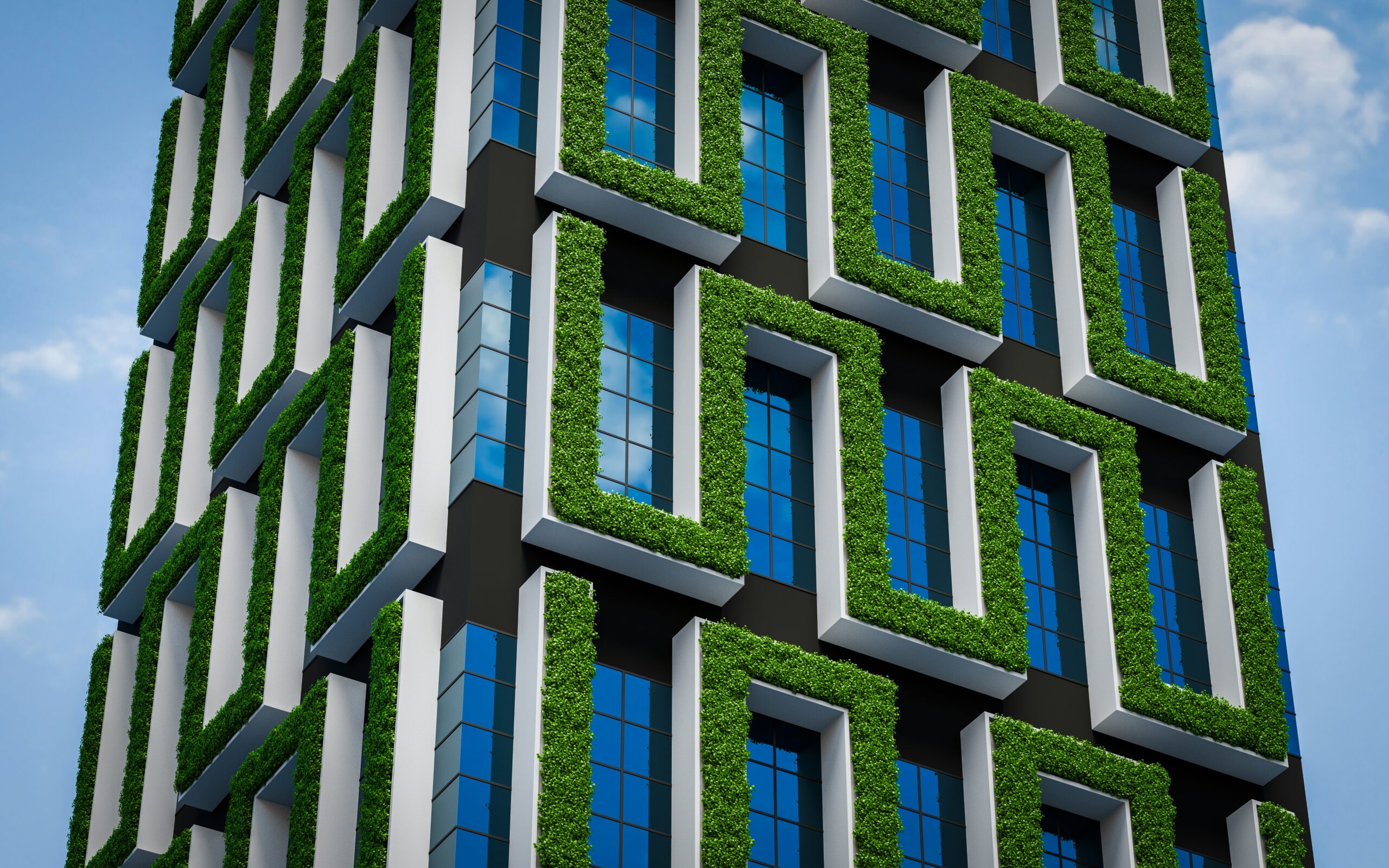
In today’s world, sustainability has become a cornerstone of every industry, and construction is no exception. With the global population and urbanization rising, building demand is increasing. Using resource-heavy materials and energy-intensive methods, the traditional construction approach has worsened climate change and environmental damage. Sustainable, eco-friendly construction has become a key solution to reduce these negative impacts. This shift aims to lower environmental harm while improving the quality of life for occupants, ensuring buildings are efficient, resource-conscious, and resilient.
The Foundation of Sustainable Building Design
At the heart of sustainable construction is the design process. In traditional construction, design often focuses solely on functionality and aesthetic appeal. However, sustainable design goes beyond that, focusing on energy efficiency, environmental impact, and overall resource management. Sustainable architecture incorporates principles such as passive solar design, energy efficiency, and ecological harmony, which are essential in creating buildings with a minimal carbon footprint.
One of the most innovative design approaches is passive design. Passive buildings are designed to maintain optimal temperatures throughout the year by leveraging natural resources like sunlight and air. By carefully orienting windows to maximize solar gain in the winter and provide shade during the summer, buildings can reduce or eliminate the need for mechanical heating and cooling. This approach reduces energy consumption and lowers the building’s reliance on fossil fuels, significantly decreasing carbon emissions.
Bioclimatic design is another strategy that incorporates environmental factors, such as local climate conditions, into the building’s design. This method seeks to optimize natural ventilation, reduce energy use, and enhance occupant comfort. Bioclimatic buildings often have green roofs that insulate, reduce stormwater runoff, and lower urban heat. Strategic planting around the building blocks, winter winds, and provides summer shade, further cutting energy use.
Revolutionizing Materials for a Sustainable Future
The materials used in construction directly impact a building’s environmental footprint. Conventional building materials like cement and steel are energy-intensive to produce and have a significant carbon impact. As the construction industry moves towards more sustainable practices, the focus has shifted to alternative materials that are renewable, recyclable, and energy-efficient.
Recycled materials are among the most significant innovations in sustainable construction. Reclaimed wood, recycled steel, and repurposed concrete are just a few examples of how materials that would otherwise end up in landfills are being reused in new buildings. Not only does this help reduce waste and lessen the demand for raw materials, but it also decreases the environmental toll of mining, logging, and manufacturing.
In addition to recycled materials, the construction industry is increasingly turning to natural materials with lower environmental impacts. Bamboo, for example, is one of the fastest-growing plants in the world, making it a renewable resource that can be harvested sustainably. Its strength and versatility make it a suitable alternative for wood in various applications, from flooring to structural elements.
Another innovative material is hempcrete, which is made from hemp fibers and lime. It is lightweight, highly insulating, and carbon-negative, which absorbs more carbon dioxide during its lifecycle than it emits. Hempcrete is sustainable and helps improve energy efficiency by reducing the need for artificial heating and cooling.
Harnessing Renewable Energy for Building Efficiency
Energy efficiency is a cornerstone of sustainable construction, and one of the most impactful ways to achieve it is through integrating renewable energy technologies. Solar power has become a widely adopted solution, with solar panels installed on rooftops to provide electricity for buildings. These panels convert sunlight into usable energy, reducing the need to rely on grid electricity, which is often generated from fossil fuels.
Many modern buildings incorporate solar panels and wind turbines, particularly in favorable wind conditions. Wind energy is another renewable source that can help reduce buildings’ carbon footprint, particularly in combination with solar power. Wind turbines generate electricity, powering a building’s lighting, heating, and cooling systems.
Geothermal energy is also gaining traction in eco-friendly construction. Geothermal heat pumps use the Earth’s stable temperature to heat and cool. This highly efficient system reduces the need for traditional HVAC systems that consume large amounts of energy. Geothermal systems benefit areas with significant geothermal activity and provide a long-term, low-maintenance solution for energy-efficient buildings.
These renewable energy systems can work together to achieve net-zero energy buildings—structures that produce as much energy as they consume. With advancements in energy storage technologies, such as lithium-ion batteries, buildings can store excess energy generated by solar panels or wind turbines during low-energy production periods. This energy independence makes buildings more resilient and less reliant on external energy sources, reducing costs and environmental impact.
Water Conservation and Eco-Friendly Building Practices
Water is one of the most valuable resources on Earth, and its conservation is critical in sustainable building design. Water scarcity is becoming a pressing issue in many regions, and buildings are designed with innovative systems to minimize water use and maximize efficiency.
Low-flow plumbing fixtures, such as faucets, showerheads, and toilets, are becoming standard in eco-friendly buildings. These fixtures reduce water consumption without sacrificing performance, helping to lower water bills and reduce strain on local water systems. In addition, rainwater harvesting systems are being incorporated into building designs to capture and store rainwater for non-potable uses like irrigation, cooling, and flushing toilets.
Graywater recycling is another technique gaining popularity in sustainable buildings. Graywater is water from sinks, showers, and washing machines. Instead of being sent to waste treatment facilities, it can be filtered and reused for landscaping or toilet flushing. This reduces the amount of freshwater used in the building, further conserving water resources.
Green infrastructure, such as permeable paving and green roofs, also plays a role in water management. These systems allow water to be absorbed and filtered on-site, reducing stormwater runoff and improving water quality. By mimicking natural water processes, buildings can help manage water sustainably and reduce the environmental impact of urban development.